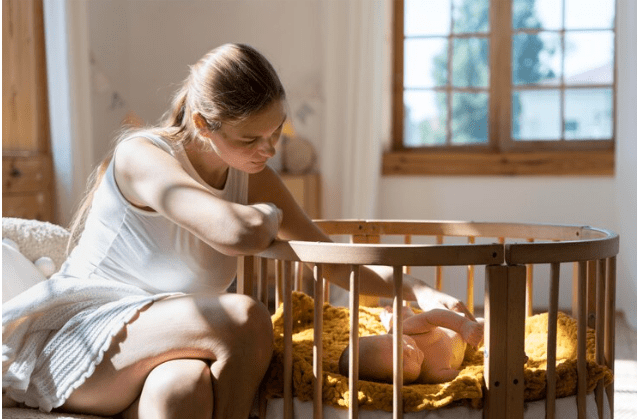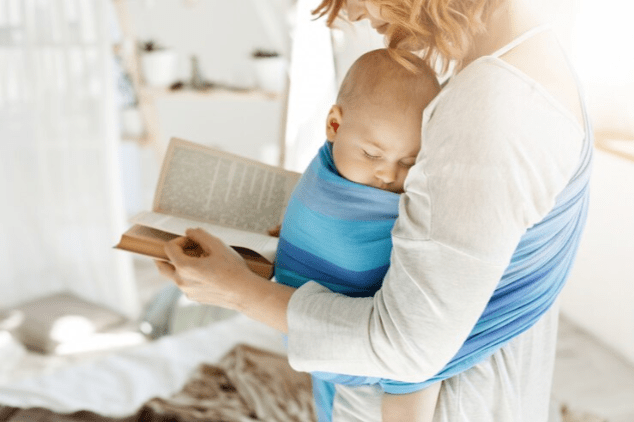Making the house baby-proof is a vital first step toward establishing a secure space for your child to develop and explore. Babies become more curious and mobile as they grow, which encourages them to engage with their environment more. This article will offer thorough instructions on how to baby-proofing various parts of your house, recognize possible risks, and put safety precautions into practice to protect your child.
Comprehending Baby-Proofing
Baby-proofing is crucial for parents and caregivers to create a safe area for infants to live, play, and explore. This preventative measure involves a complete home evaluation to identify and eliminate hazards for an active infant. Sharp edges, tiny ingestible objects, loose furniture, and easily accessible hazardous materials are among the common concerns. Once recognized, these risks are reduced or completely removed with the use of safety devices like outlet covers, corner guards, cabinet locks, and safety gates.
Baby-proofing means creating a safe environment where newborns can thrive and develop their natural curiosity. The requirements of baby-proofing frequent house examinations and safety precaution tweaks as babies grow and learn.
The Baby-proofing aims to balance safety and curiosity so infants can learn and play without risk. A purposeful, continuing commitment to providing a safe, caring, and inquisitive environment for the family’s youngest and most vulnerable members.
When to Take Out the Baby Proofing

When your infant is not yet mobile, this is the ideal moment to begin baby-proofing. This usually happens when babies begin to roll over and eventually crawl, which happens between three and six months. If you prepare ahead of time, your home will be secure when your baby starts to explore.
Generally Safe Advice
Constantly watch over your infant. A home that has been meticulously baby-proofed cannot take the place of dedicated care for safety.
Frequent Inspections: Reevaluate the safety of your house frequently as your child grows and acquires new skills.
Standards for Safety: To be sure they offer adequate protection, select baby-proofing items that adhere to the most recent safety regulations.
Room-by-Room Overview
Safety of Nursery Cribs: Make sure the crib satisfies current safety regulations by having slats spaced no more than 2 3/8 inches apart. Keep it away from wires, windows, and drapes.
Changing Table: When changing your baby, always keep one hand on them and use a changing table with raised sides.
Playthings and Add-ons: Frequently inspect for damaged or loose items that could pose a choking danger.
Kitchen Lock Cabinets and Drawers: To keep breakables, sharp objects, and dangerous products out of reach, use safety locks.
Install oven locks and coverings for stove knobs to ensure stove safety. Pot and pan handles should always be pointing inward.
Safe Appliances: Ascertain that certain appliances, such as the dishwasher and refrigerator, are off-limits.
Living Room Furniture: To avoid tipping, fasten large, heavy furniture to the wall. For edges that are sharp, use corner guards.
Electrical sockets: Use safety plugs to cover unused sockets.
Cords and Blinds: Whenever possible, use cordless window coverings and keep cords out of reach.
Bathroom Toilet Lock: To reduce the risk of drowning, install a toilet lock.
Non-Slip Mats: Place non-slip mats on the bathroom floor and inside the bathtub.
Medicines and Cleaning Supplies: Store cleaning supplies, cosmetics, and medications in secured cabinets.
Safety gates should be installed at the top and bottom of staircases and hallways. For usage at the top of the stairs, pick wall-mounted gates.
Clear Pathways: To avoid tripping, keep the stairs and hallways clutter-free.
Recognizing and Steering Clear of Common Risks
Risks of Choking
Tiny Objects: Keep tiny things out of reach, such as change, batteries, and tiny toys.
Food safety tip: Make sure infants are sitting when eating and steer clear of anything that poses a choking threat.

Risks of Suffocation and Strangulation
Plastic wraps and bags: Store these items out of the way.
Cords and Strings: Keep electrical equipment and blinds’ cords well out of reach.
Hazards of Poisoning
Household Chemicals: Keep all chemicals in closed cabinets, including cleaning products and pharmaceuticals.
Plants: A few common houseplants are toxic. Make sure no plant in your house is poisonous.
Risks of Drowning
Bath Time: Never, not even for a little period, leave a baby unsupervised in the bathtub.
Buckets and Containers: Immediately after usage, empty all buckets, containers, and wading pools.
Fall Risks
Install window guards and keep furniture away from railing areas when it comes to windows and balconies.
Outdoor Safety Fencing: Make sure your yard is fenced with safe fencing if you have one. Look for any openings that a kid could be able to get through.
Play Equipment: Make sure the outside play equipment is placed on a soft surface, age-appropriate, and well-maintained.
Safety of Pets
Pet Interactions: Watch your infant closely whenever they engage with your pets. Instruct pets to be kind to the infant and to keep their food and toys out of reach.
Secure Pet Zones: To give pets their space and keep the baby secure, think about establishing pet-specific, off-limits areas.
Baby Safety and Technology
Safe Electronics: Make sure that no electronic gadget is accessible and that it is safe to use. Cords should be hidden or fastened to avoid tripping or pulling.
Online Safety: As your child gets older, think about how technology may affect their safety. This includes securing internet access and establishing sensible limits.
Being Ready for Emergencies
Emergency Contacts: Always have a list of emergency contacts on hand, including the pediatrician and poison control.
First Aid: Keep a well-filled first aid box and make sure caregivers are trained in CPR and basic first aid.
Traveling while preparing for a baby
Car Safety: Make sure the car seat is installed correctly and use the right one at all times. In a car, never leave your baby alone.
Transportable Safety Supplies: Bring portable safety equipment such as bed rails, window locks, and travel gates when you travel.
Safeguarding Infants with Special Needs
Individual Needs: Extra baby-proofing steps may be required if your child has particular needs. Seek counsel from medical professionals for specific guidance.
Safety of the Senses: Take care not to overstimulate your senses. Establish a calm, comfortable area where your youngster can go when feeling overwhelmed.
Teaching Your Youngster
Teaching Boundaries: As your child gets older, impart safety and unsafety knowledge to them. Promote exploration while staying within reasonable bounds.
Participate in Safety Procedures: Include baby-proofing into everyday activities; instruct older kids, for instance, to put away small toys after playing.
Modernizing Baby-Proofing Procedures
Frequent Evaluations: Your infant will come across new dangers as they get older. Examine your house frequently to spot any new threats.
Remaining Up to Date: Stay informed about the most recent product recalls and child safety regulations.
Expert Support
Safety Consultants: If you would like a professional home assessment, think about hiring a kid safety consultant.
Installation Services: For intricate installations, such as window guards or stair gates, use expert services.
Supportive and Community Parenting Groups: Join parenting communities to benefit from the experiences of others and to exchange advice on baby-proofing.
Internet Resources: For the most recent pointers and advice, check out blogs, forums, and internet resources devoted to baby-proofing and kid safety.
Exploration and Safety in Balance
Promote Exploration: Give your infant lots of chances to explore and learn in a safe setting while still keeping them safe.
Establishing Play Zones: Set aside some spaces in your house as “safe zones” where your infant can play unrestrictedly and safely.
Choosing Baby-Proofing Items
Choose baby-proofing goods based on their durability, ease of use, and positive feedback from other parents. Corner protectors, cabinet locks, outlet covers, and safety gates are a few popular items used for baby proofing.
Teaching Siblings and Caregivers
Make sure that whoever is taking care of your child knows about the safety precautions that have been put in place and how important it is to follow them. Teach older siblings to keep potentially hazardous objects and toys out of the baby’s reach.
Conclusion
Baby-proofing evolves as your child learns and explores. Knowing the hazards and taking steps can help your child develop in a safe environment. Reviewing and updating your baby-proofing procedures can keep your home secure for your child’s adventures. Baby-proofing is important, but it can’t replace constant supervision to keep your child safe.
Baby-safe proofing is a vital, continuous process that changes to accommodate your child’s development and evolving skills. It includes not just making structural changes to your house but also training caregivers, becoming ready for emergencies, and providing your child with a secure, exploratory space. Through knowledge, awareness, and initiative, you may establish a nurturing environment that will allow your infant to grow up in safety.
We hope you found this information helpful in your journey to create a safer environment for your family. At GuardWell Safety, we understand that every home is unique, and so are your child-proofing needs. That’s why we offer a Free Child-Proofing Consultation tailored to your specific requirements. Let our experts help you identify potential hazards and provide personalized solutions to make your home a secure haven for your little ones. Book your free consultation today and take the first step towards peace of mind.






